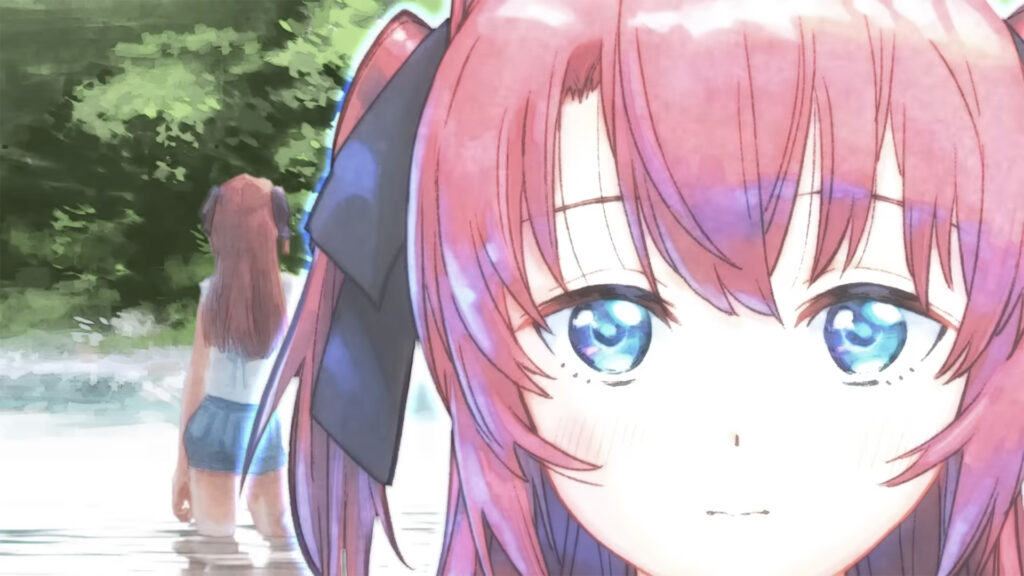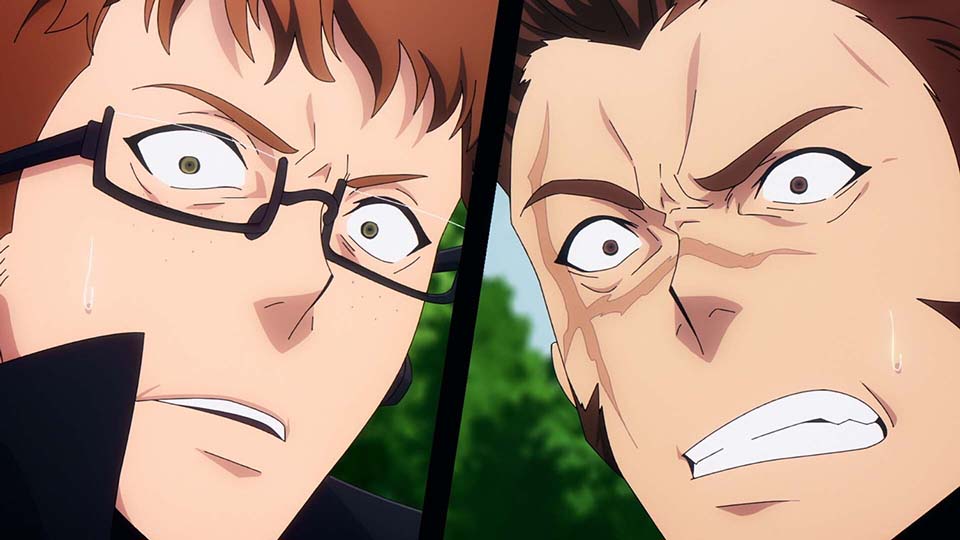Welcome, readers, to Late to the Party , a column that's right on time when it comes to catching up on anime everyone's already watched. This column addresses a universal truth in regard to being an anime fan: an anime backlog is quite the powerful beast. Many of us have one, where we amass more and more content we have designated in the "planning to watch" category. How and why it takes so long to actually address this task varies from person to person, but the gratification of finally allocating the time is really quite splendid. Occasionally, it’s by watching a classic anime from yesteryear that you’ve had your eye on for quite some time. In other instances, it’s a more recent premiere that just slipped by. Seeing as we are now in the third month of the year, I decided to finally tackle an anime that had March in the title. As silly a reason as that is, I was rewarded with a truly fulfilling viewing experience. So please, allow me to discuss an anime that is about shogi, about grief, and above all else, about people. What Is March comes in like a lion About? Studio: Shaft ( MONOGATARI Series OFF & MONSTER Season , Dance in the Vampire Bund , Magia Record: Puella Magi Madoka Magica Side Story ) First aired: October 2016 (over eight years late to the party! Shogi requires patience and consideration, but even the most disciplined shogi master surely would have given up on me by now.) In a small town by a big river, there lives a young man. He is a teenage shogi prodigy; a boy who turned pro back while he was still in middle school. His name is Rei Kiriyama, and much like the river he so admires, he finds himself adrift in the misery of his own existence. RELATED: Suffering Alone in March comes in like a lion If you’ll pardon the somewhat hyperbolic lede, I couldn’t help but frame this anime in a poetic manner. Sometimes when you watch something truly special, your mind is pulled in a thousand directions all at once and you’re not quite certain where to start. So I started there. March comes in like a lion is a quiet, introspective story with a soft color palette and a cast of characters who will quickly work their way into your heart. Despite Kiriyama’s considerable talents as a rising shogi star, he is just barely holding himself together. When we first meet him, he is sleeping on the floor of his barren Tokyo apartment with little more than a shogi board and a smattering of empty ramen cups. Although it’s a scarily accurate representation of your average 17-year old living by themselves — there’s a moment where he folds a piece of fried chicken into a single slice of bread for breakfast and it is the most relatable thing I have ever witnessed in anime — it is indicative of a much bigger issue: Kiriyama is desperately alone and trying to escape from his past. This past is something that will be unravelled over time, in a manner that becomes progressively more distressing. But for now, this is all we really know about this enigmatic shogi savant, and that mystery is what makes him so downright compelling. RELATED: The Real World Locations of March comes in like a lion What we come to realize is that his is a self-imposed isolation of sorts, because March comes in like a lion is loaded with wonderful personalities. Its somber themes are offset marvellously by the bright faces of Kiriyama’s friends — starting with the Kawamoto family. This trio of sisters live with their grandfather in an old house on the other side of the river, continuously prompting Kiriyama to visit for a home cooked meal. As established, his apartment is stark and bleak, so the juxtaposition of the Kawamoto household is lovely to behold. It feels warm and familiar, packed with knick knacks and countless memories in each cozy little room. It goes without saying, this is an absolutely beautiful anime on an aesthetic front, with a level of detail that rivals many feature length films. I’m not even exaggerating here, all it takes is one look at the peerless visuals to be convinced. The Art of Shogi To escape from his traumatic upbringing, Kiriyama has thrown himself into his shogi career, and as you can expect, a great deal of the narrative is centered around this revered board game. If you’re anything like me and entirely unfamiliar with the rules, you might assume this could prove a hurdle to your viewing experience. I can attest, this is absolutely not the case. Kiriyama’s shogi matches are framed in such a way that we at least comprehend his motivations as he deliberates each move. It’s not dissimilar to a shonen sport anime, where the storytelling on display can fill in the gaps for any lack of knowledge. RELATED: Head Space – "March Comes in Like a Lion" Player and Game Even still, part way through, we are provided with a charming shogi lesson, complete with singing cats. It is equal parts adorable and informative, and my six month old son is obsessed with the shogi song. Another prodigy in the making, perhaps? Our investment in the game of shogi becomes imperative, because Kiriyama’s cohorts feel so vibrant and lively. There’s his braggadocious rival (self proclaimed, of course), Harunobu Nikaidou, who could best be described as the chuunibyou (adolescent with delusions of grandeur) equivalent of the shogi world. Then there are his enthusiastic seniors, Matsumoto and Misumi, who display a level of passion Kiriyama could scarcely even dream of. It really goes to show that we are all the heroes of our own stories, and Kiriyama must grapple with the guilt that comes from toppling them. It’s a harrowing reminder that sometimes, the pursuit of your own dreams can result in others being robbed of theirs. One of Anime’s Great Protagonists Whether it’s Kiriyama’s shogi exploits or the developing details of his personal life, you inevitably find yourself totally invested as you watch. I’ve only tangentially mentioned Kiriyama himself, but rest assured, he is one of anime’s great protagonists. I found myself analyzing his behaviors from a layman’s perspective, pondering whether he was dissociating as a defense mechanism, or if his pain cuts so deep, he just didn’t care anymore. Again, the pieces of the puzzle fall into place with the methodical precision of an expert shogi match, but even from an early stage, I gravitated toward Kiriyama as a character. He has so many traits that are uncommon to the medium, such as how he will sometimes sit there in complete silence for several seconds just to process something. Stillness is not something this anime shies away from, punctuated by exquisite, dynamic perspectives that evoke its manga origins. The layers you can explore here are multifaceted, such as the central themes of pure, clean water and murky, suffocating ink. There’s so much to unpack, but even when just judged on a surface level, March comes in like a lion is a proven winner. There’s a reason it is so celebrated and enduring, inviting analysis to those who seek it, and yes, I very much encourage you to explore the links dotted throughout this article. If I were to assign a quality to this anime, I would perhaps opt for “fluid.” It is such a comfortable anime to watch — even with the trauma and hurdles its characters undergo, it is presented in a quietly dignified manner. There’s a developing sense of optimism that permeates through life’s challenges, offering lessons that any viewer can take on board. Now, if you’ll excuse me… nyan nyan nyaa nyaa de nyaa, shogi, nyan nyan nyaa nyaa de nyaa, shogi !


